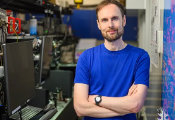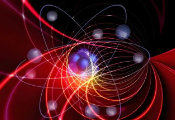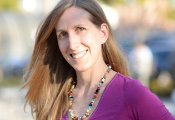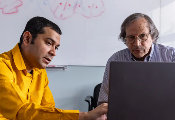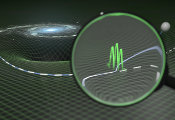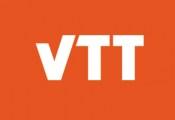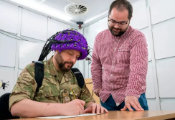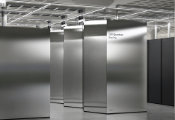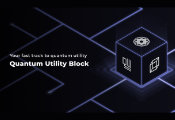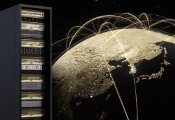Quantum Breakthrough Sheds Light on Perplexing High-Temperature Superconductors
Superfast levitating trains, long-range lossless power transmission, faster MRI machines — all these fantastical technological advances could be in our grasp if we could just make a material that transmits electricity without resistance — or ‘superconducts’ — at around room temperature.
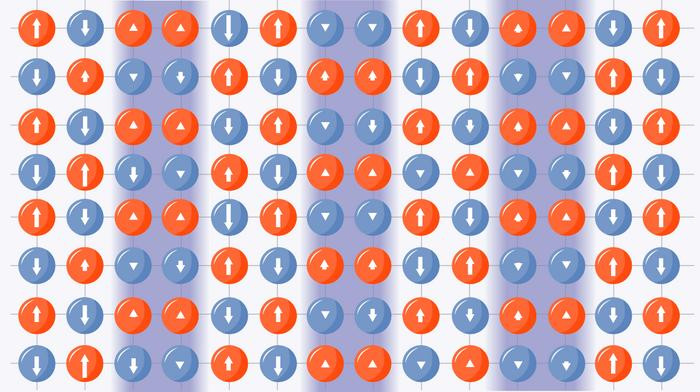
In a paper published in the May 10 issue of Science, researchers report a breakthrough in our understanding of the origins of superconductivity at relatively high (though still frigid) temperatures. The findings concern a class of superconductors that has puzzled scientists since 1986, called ‘cuprates.’
“There was tremendous excitement when cuprate superconductors were discovered [in 1986], but no understanding of why they remain superconductive at such high temperatures,” says Shiwei Zhang, a senior research scientist at the Flatiron Institute’s Center for Computational Quantum Physics (CCQ). “I think it’s surprising to everybody that almost 40 years later, we still don’t quite understand why they do what they do.”
In the new paper, Zhang and his colleagues successfully re-created features of cuprate superconductivity with a simple model called the two-dimensional Hubbard model, which treats the materials as if they were electrons moving around a quantum chessboard. The breakthrough comes only a few years after the same researchers demonstrated that the simplest version of this model couldn’t perform such a feat. Such straightforward models can spark a deeper understanding of physics, says study co-author Ulrich Schollwöck, a professor at the University of Munich.
“The idea in physics is to keep the model as simple as possible because it’s difficult enough on its own,” Schollwöck says. “So in the beginning we studied the simplest version imaginable.”
In the new study, the researchers added to the 2D Hubbard model the ability for electrons to make diagonal hops, like bishops in chess. With this tweak and thousands of weeks-long simulations on supercomputers, the researchers’ model captured the superconductivity and several other key features of cuprates previously found in experiments. By showing that the humble Hubbard model can describe cuprate superconductivity, the authors prove its worth as a platform for understanding why and how superconductivity emerges.
“When I started working on the Hubbard model in the early days of high-temperature superconductivity, we thought that once we got the pure model simulated on a small ‘chessboard,’ we would totally understand superconductivity,” says study co-author Steven White, a professor at the University of California, Irvine. “But as we developed the techniques, we found that the Hubbard model was much more complicated than we thought.”
Quantum mechanics creates that complexity: The layers are inhabited by electrons, each with either an up or a down spin. The electrons can become entangled. This entanglement means the electrons can’t be treated separately even when far apart, making them incredibly difficult to simulate on a computer.
“Although the Hubbard model can be written down as an equation taking only a line or two of text, because it is applied to hundreds of atoms interacting through the strange laws of quantum mechanics, one could simulate it on a computer as large as the earth for thousands of years and still not be able to get the right answers,” White says.
Shortcuts are needed to deal with that level of complexity — and such shortcuts are the researchers’ specialty. In the ’90s, White and Zhang separately developed now renowned techniques that cut computing time down exponentially. To deal with the enormously complicated model that comes from adding the diagonal hop, the researchers married those two techniques. One technique thinks of the electrons more like particles; the other emphasizes their wavelike structure.
“The big thing about the combination is that the one is strong where the other is weak,” says Schollwöck. “We could make a ‘handshake’ in a certain area where they both work, certifying one method using the other, and then explore the unknown where only one of them works.” Such a collaborative multimethod approach is the legacy of the Simons Collaboration on the Many Electron Problem, which included many CCQ scientists, he says.
Besides the quantum mechanical rules for movement, the number of electrons on the chessboard affects the physics of the model. For many years, physicists have known that when there is the same number of electrons as spaces on the board, the electrons form a stable checkerboard pattern of alternating up-and-down spins. This setup isn’t superconductive — in fact, it isn’t conductive at all. Cuprates therefore require a change in the number of electrons.
In the earlier work by Zhang and his colleagues with the simplest Hubbard model, adding or removing electrons didn’t result in superconductivity. Instead, the stable checkerboard turned into a striped pattern, with stripes consisting of either lines with extra electrons or lines with holes left by the removed electrons.
However, when the researchers added the diagonal hop factor to the Hubbard model, the stripes became only partially filled, and superconductivity emerged. Furthermore, the outcome roughly matched experimental results on cuprate properties.
“Are stripes strictly competing with the superconductivity, or are they causing the superconductivity, or is it something in between?” asks White. “The current answer is something in between, which is more complicated than either of the other answers.”
Zhang says the paper proves the continued salience of the Hubbard model and ‘classical’ computation — that is, developing techniques and algorithms that make better use of regular computers rather than waiting for quantum computers.
“After over 30 years of intense effort by the community without many reliable answers, it’s often been argued that solving the Hubbard model would have to wait for a quantum computer,” Zhang says. “This effort will not only advance research in high-temperature superconductivity, but hopefully also spur more research using ‘classical’ computation to explore the wonders of the quantum world.”

